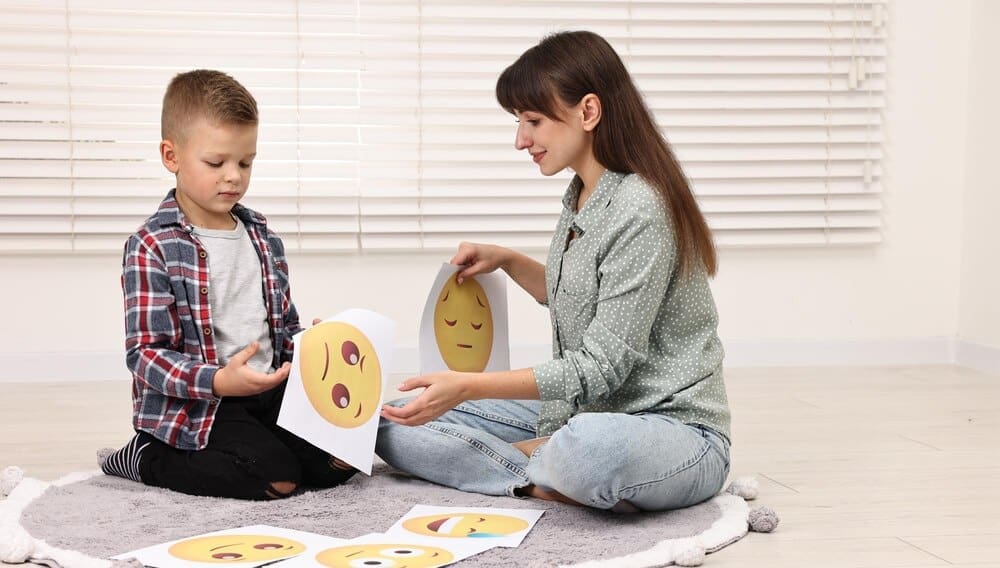For a child struggling with anxiety, trauma, or overwhelming emotions, words often fail. Play therapy is a specialized form of psychotherapy that bridges this gap, utilizing a child’s natural language—play—to help them explore their feelings, process difficult experiences, and develop healthier coping mechanisms. Guided by a trained therapist in a safe, dedicated playroom, children use toys, art, and imagination as their vocabulary, allowing them to express what they cannot verbalize and work toward psychological healing. This evidence-based approach is used worldwide to help children navigate challenges ranging from family divorce and grief to behavioral issues and significant trauma, empowering them to build resilience and emotional intelligence from a young age.
What is Play Therapy?
At its core, play therapy is a therapeutic model grounded in the understanding that play is essential to a child’s social, emotional, and cognitive development. It is far more than simply letting a child play in a room while a therapist watches. It is a structured, theoretically-based approach to therapy that builds on the normal communicative and learning processes of children.
The Association for Play Therapy defines it as “the systematic use of a theoretical model to establish an interpersonal process wherein trained play therapists use the therapeutic powers of play to help clients prevent or resolve psychosocial difficulties and achieve optimal growth and development.” In simpler terms, the playroom becomes a safe space where a child can confront and master their struggles on their own terms.
The core principle was famously summarized by child psychologist Garry Landreth: “Toys are children’s words, and play is their language.” While an adult might talk through a problem, a child will play it out. A child experiencing conflict at home might use dolls to act out arguments, or a child who feels powerless might use superhero figures to feel strong and in control.
The Science Behind the Sandbox: Why Play Works
The effectiveness of play therapy is not based on guesswork; it is rooted in neuroscience and developmental psychology. During play, children engage parts of the brain responsible for problem-solving, creativity, and emotional regulation. This active engagement helps forge new neural pathways, essentially rewiring the brain to handle stress more effectively.
Play provides a critical psychological distance from a problem. It feels safer for a child to explore a scary event—like a car accident or a hospital stay—using toy cars and doctor kits than it does to recount the experience directly. This distance lowers their defenses, allowing the therapist to observe the child’s underlying fears and anxieties as they emerge organically through the narrative of their play.
Furthermore, play allows for a cathartic release of pent-up emotions. A child who is taught not to hit can safely punch a bop bag or smash play-doh in the playroom, releasing anger in a contained and acceptable way. The therapist can then help the child understand that feeling and find healthier ways to manage it outside the therapy room.
Who Can Benefit from Play Therapy?
Play therapy is a versatile modality that can help children, typically between the ages of 3 and 12, who are facing a wide array of social, emotional, and behavioral challenges. It is often recommended for children experiencing issues such as:
- Anxiety, social anxiety, fears, and phobias
- Depression, sadness, and social withdrawal
- Grief and loss due to the death of a loved one or pet
- Trauma resulting from abuse, neglect, accidents, or natural disasters
- Behavioral problems at home or school, including aggression and defiance
- Family transitions, such as divorce, separation, or the arrival of a new sibling
- Attention-Deficit/Hyperactivity Disorder (ADHD)
- Autism Spectrum Disorder, to help with social skills and emotional expression
- Chronic illness or significant medical procedures
While most commonly associated with younger children, play therapy techniques can also be adapted for adolescents and even adults, particularly when dealing with trauma that is difficult to access through traditional talk therapy.
Inside the Playroom: What a Session Looks Like
A therapeutic playroom is intentionally designed to facilitate expression. It is not just a room full of random toys. Each item is carefully selected for its potential to elicit emotional and creative responses. You will often find a dollhouse and puppets for re-enacting family dynamics, a sand tray with miniatures for building symbolic worlds, art supplies for non-verbal expression, and aggressive-release toys like foam swords or a bop bag.
The therapist’s role is to create an atmosphere of complete acceptance, safety, and empathy. They follow the child’s lead, reflecting their actions and feelings without judgment. For example, if a child is burying a doll in the sand, the therapist might say, “It looks like that person is hiding,” or “You’re making sure they are covered up completely.” This reflection helps the child feel seen and understood, validating their experience and encouraging deeper exploration.
Approaches to play therapy generally fall into two main categories, though many therapists use an integrated approach.
Nondirective Play Therapy
Also known as Child-Centered Play Therapy, this approach is unstructured and child-led. The belief is that a child has an innate drive toward healing and, given the right conditions of safety and acceptance, will naturally play out what is most pressing for them. The therapist acts as a facilitator and a mirror, reflecting the child’s behavior and emotions to help them gain self-awareness.
Directive Play Therapy
In this approach, the therapist takes a more active role in guiding the session. They may introduce a specific game or activity designed to address a particular therapeutic goal. For example, a therapist might use a storytelling game to help a child develop problem-solving skills or use a board game designed to teach about feelings. This method often incorporates techniques from Cognitive Behavioral Therapy (CBT) adapted for a younger audience.
The Role of the Parent or Caregiver
A child’s healing does not happen in a vacuum. The involvement of parents and caregivers is a critical component of successful play therapy. Therapists typically meet with parents separately on a regular basis to discuss themes and patterns they are observing in the child’s play.
These meetings are a two-way street. The therapist provides parents with insights into their child’s inner world and offers strategies to support their child at home. In turn, parents provide the therapist with important information about the child’s behavior and progress in their daily environment. In some cases, therapists may practice Filial Therapy, which involves training parents to conduct special, child-centered play sessions with their own children to strengthen the parent-child bond.
Finding a Qualified Play Therapist
When seeking help for your child, it is vital to find a mental health professional with specialized training and credentials in play therapy. A licensed clinician (such as a psychologist, social worker, or mental health counselor) can become a Registered Play Therapist (RPT) by completing extensive post-graduate coursework, hundreds of hours of supervised clinical experience, and ongoing education specifically in play therapy.
Parents should feel empowered to ask about a therapist’s qualifications, their specific approach to play therapy, and their experience working with children facing similar challenges. A good therapist will welcome these questions and be transparent about their process and how they involve parents in the treatment plan.
A Pathway to Healing
Play therapy is more than just a distraction or a way to keep a child busy; it is a profound and effective form of psychotherapy that respects a child’s developmental level. By meeting children in their world and speaking their language, it provides a powerful pathway for them to process pain, build self-esteem, learn new coping skills, and develop the emotional resilience they need to thrive. It honors the simple but powerful truth that for a child, the work of growing and healing is done through play.














